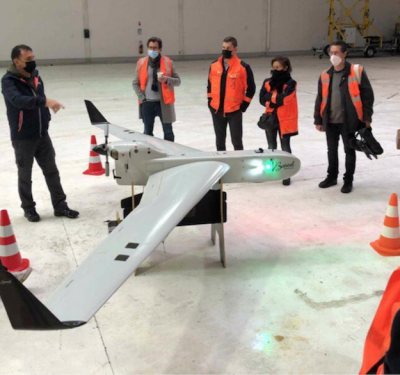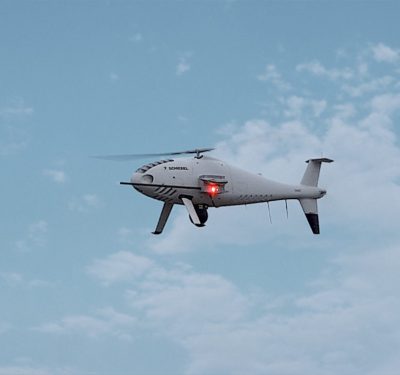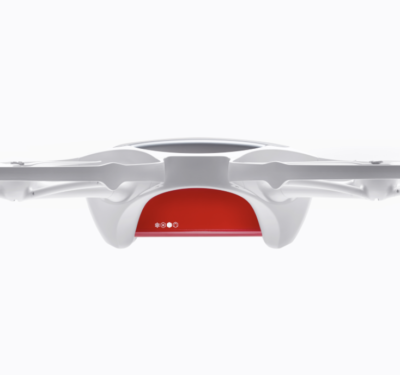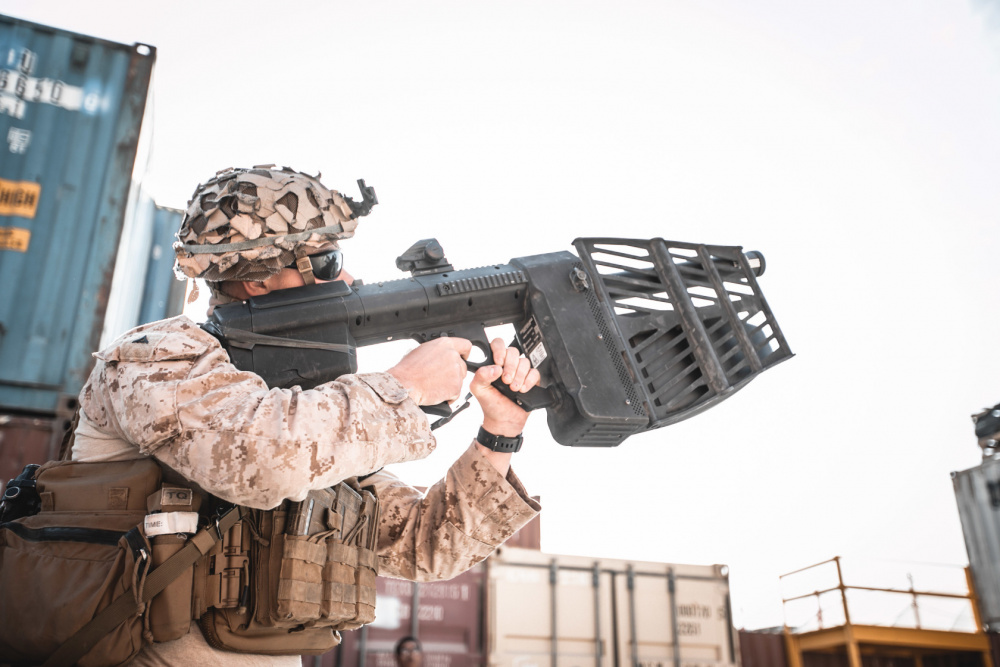
A U.S. Marine with 2nd Battalion, 1st Marines, assigned to Special Purpose Marine Air-Ground Task Force – Crisis Response – Central Command (SPMAGTF-CR-CC), participates in Counter-Unmanned Aircraft System (UAS) training in the United States Central Command area of operations, May 21, 2021. The training involved familiarization with the hand-held CUAS devices that are designed to detect and deter enemy drones. The SPMAGTF-CR-CC is a crisis response force, prepared to deploy a variety of capabilities across the region. (U.S. Marine Corps photo by Gunnery Sgt. Melissa Marnell)
U.S. Marine Corps infantrymen have a new type of weapon to defend against enemy unmanned aerial systems (UAS). Drones are increasingly used by enemy forces for intelligence-gathering on U.S. and allied bases and have also been weaponized. The Dronebuster is a hand-held jammer that can force a UAS to descend or to return to its operator. If a drone is positively identified, a Marine standing on post can point the device at the drone and eliminate it as a threat.
The Special Purpose Marine Air-Ground Task Force Crisis Response – Central Command announced that U.S. Marines have received newest handheld Dronebuster devices that are designed to detect and deter enemy drones. The Marines participated in Counter-Unmanned Aircraft System (cUAS) training to use the new equipment in the United States Central Command area of operations, May 2021. The handheld systems allow the Marines to remain expeditionary and ready to move at a moment’s notice.
The Dronebuster is produced by Flex Force, based in Portland, Oregon, and is authorized for official purchase by the U.S. Department of Defense. It has also been deployed by law enforcement agencies across the country.
Features:
- Size: 21”L s 10.5”H x 6.5”W (53cm x 27 cm x 16 cm)
- Weight: 4.9 lbs.
- Batteries: Type BB-2847A/U (BT-70747) Li-Ion rechargeable battery.
- Endurance: 3 hrs. continuous jamming, 10 hrs. in RF detection mode
- Continuous Operation: 12 VDC input power
- Effective range: Varies based on range from drone to controller. Typical range is 300% of distance from drone to controller
- Industrial, Scientific and Medical (ISM)-band Jamming Frequencies: Effective against all ISM bands being used by commercial drones.
- GPS Jamming Frequencies: Effective against GPS frequencies. Utilizes shaped beam to minimize inadvertent GPS disruption.
- Applicability: The Dronebuster is effective against all commercial class I and II UAS using ISM and GPS frequencies for communications. In addition, the Dronebuster is effective against a range of custom built and modified class I and II UAS.
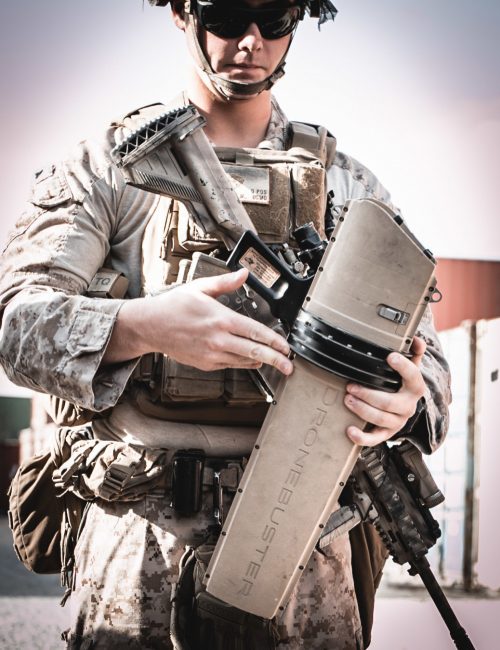
(U.S. Marine Corps photo by Gunnery Sgt. Melissa Marnell)
Upwards of 700 Dronebuster systems have been fielded with military and law enforcement customers around the globe, and been proven to be highly effective against modified and commercial off-the-shelf (COTS) drones. The Dronebuster Block 3, and Dronebuster Block 3B were designed to interrupt the control of the drone by overwhelming the control frequency. This causes the drone to either stop and hover, or return to the operator, depending on the model of drone. The drone operator has no control of the drone while the command link is being overwhelmed with RF energy.
In addition, the Dronebuster can also overwhelm the GPS / GNSS signal causing the drone to hover, land, or fall out of the sky. Both the Dronebuster Block 3 and Dronebuster Block 3B run on mil-spec batteries or connected power, and require only minimal training prior to use.
Both the Dronebuster Block 3, and the Dronebuster Block 3B can be ordered in configurations for integrated systems or for stand-alone man-portable use. The ability of the Dronebuster family of products to be used as part of an integrated C-sUAS system or as stand-alone mitigation systems provides Dronebuster users, C-sUAS systems integrators, and original equipment manufacturers with the flexibility needed to meet their specific mission requirements.
“As we face an ever-evolving enemy, it is important to be able to mitigate the threat at the lowest possible level,” said Captain Christopher Syrowik, a Forward Air Controller assigned to 2nd Battalion, 1st Marines. “Putting the drone buster into the hands of a Lance Corporal allows him to have a large impact while remaining mobile and lethal.”



